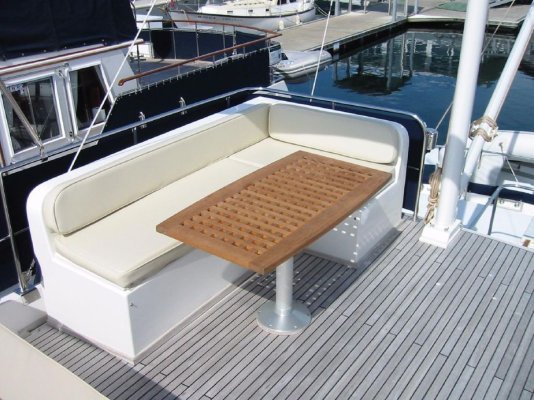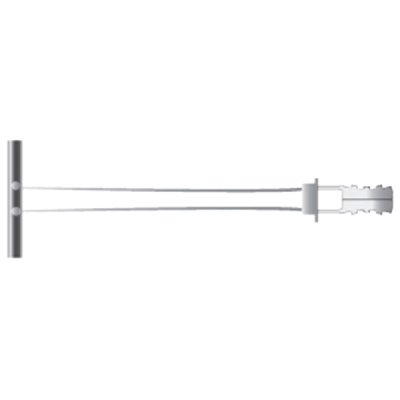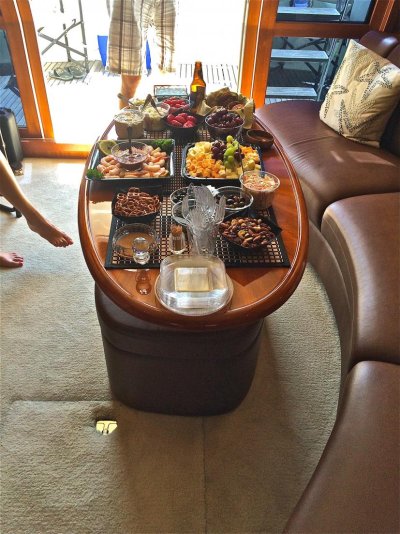firstbase
Guru
- Joined
- Nov 6, 2016
- Messages
- 1,644
- Location
- United States
- Vessel Name
- Black Eyed Susan
- Vessel Make
- Grand Banks 42' Classic
Looking at installing a settee and teak table as shown in this pic on the flybridge of my 1987 Grand Banks 42' with original but in good shape teak decks.
What is the proper way to install the table base like this on top of teak decks? Does the base have to be through bolted with a backing plate? That would require temp removal of the headliner which I am not very excited about. I don't know the thickness or exact make up of the cabin top. Believe it is plywood sandwiched with fiberglass but don't know how thick. Any comments/hints appreciated.
Second, what fastening is needed for the settee? Through bolt again or just screwed down to deck? I would think that the weight and shape would keep it pretty grounded with minimal fastenings or is that foolish thinking?
Any help/comments appreciated.
What is the proper way to install the table base like this on top of teak decks? Does the base have to be through bolted with a backing plate? That would require temp removal of the headliner which I am not very excited about. I don't know the thickness or exact make up of the cabin top. Believe it is plywood sandwiched with fiberglass but don't know how thick. Any comments/hints appreciated.
Second, what fastening is needed for the settee? Through bolt again or just screwed down to deck? I would think that the weight and shape would keep it pretty grounded with minimal fastenings or is that foolish thinking?
Any help/comments appreciated.





